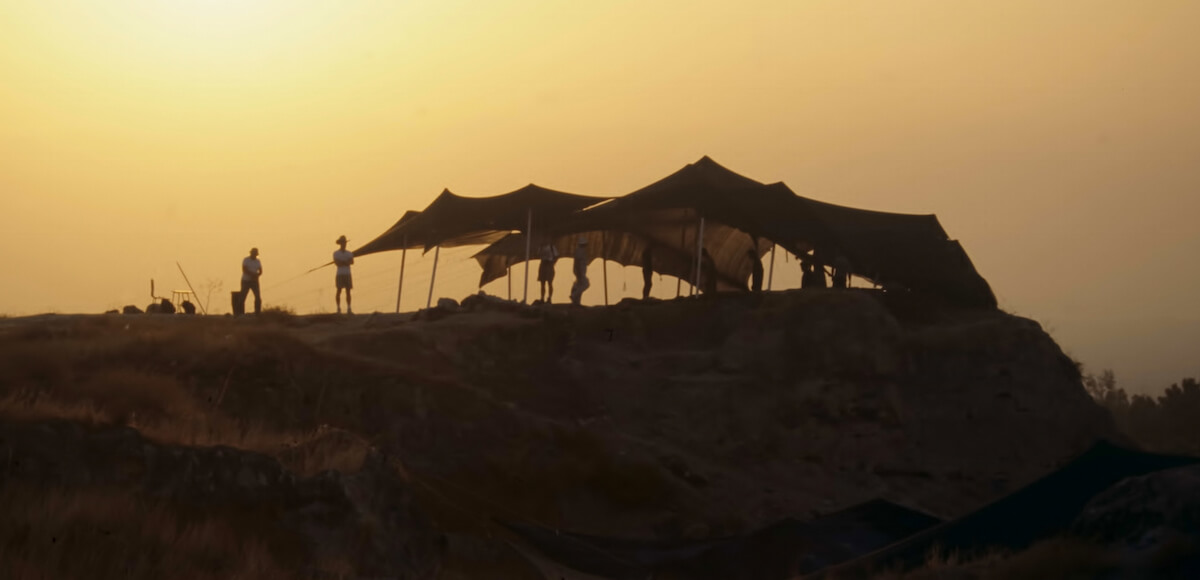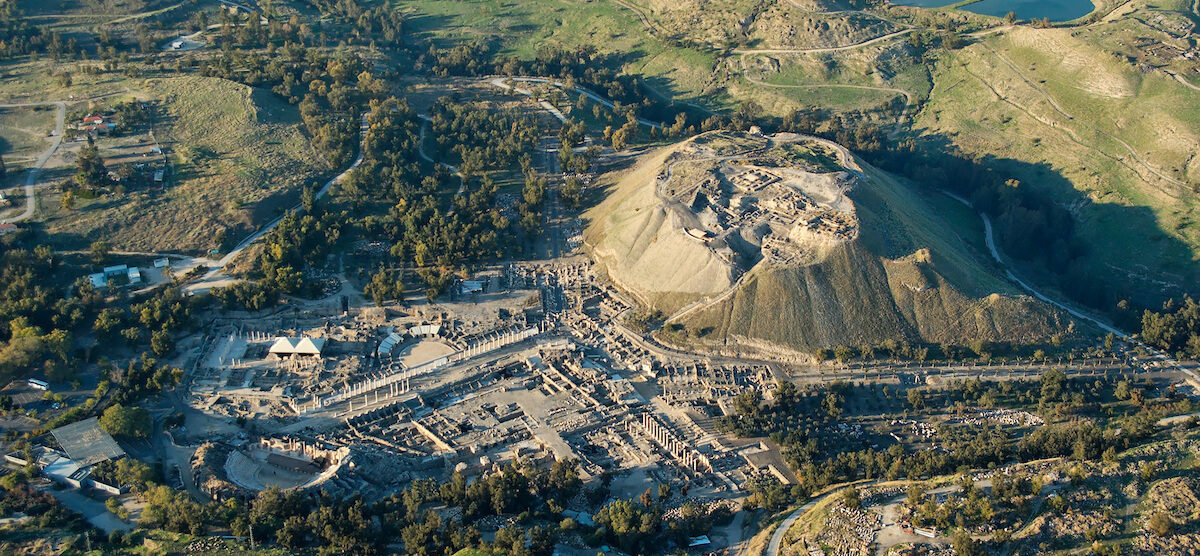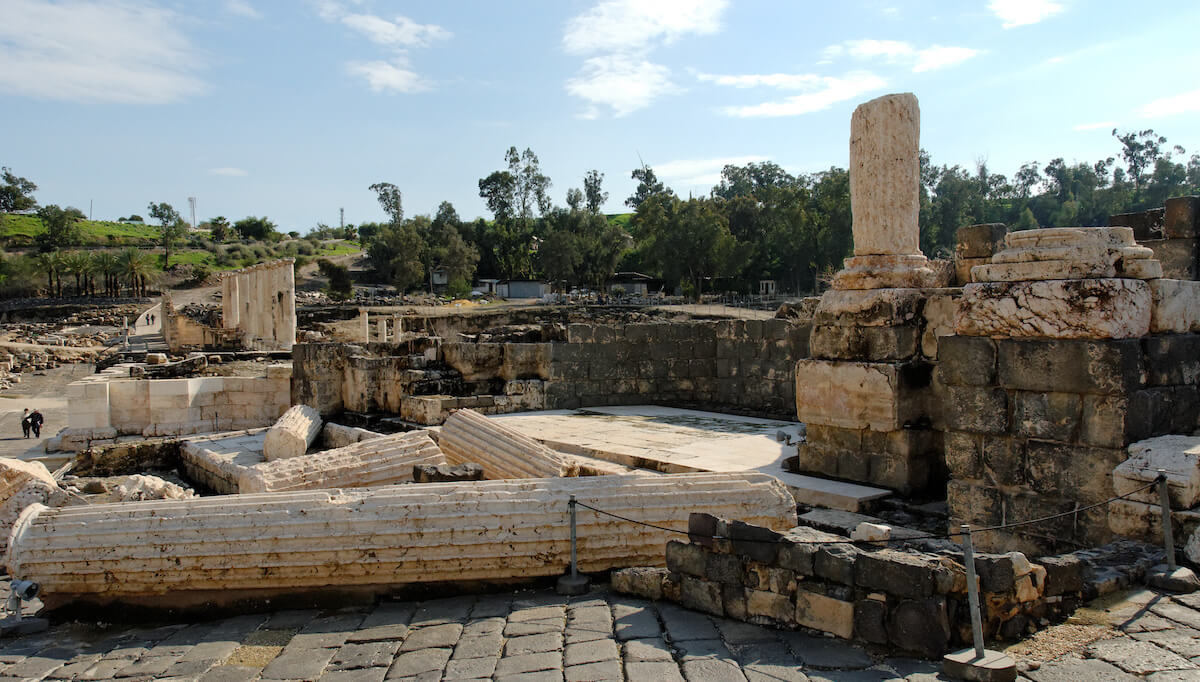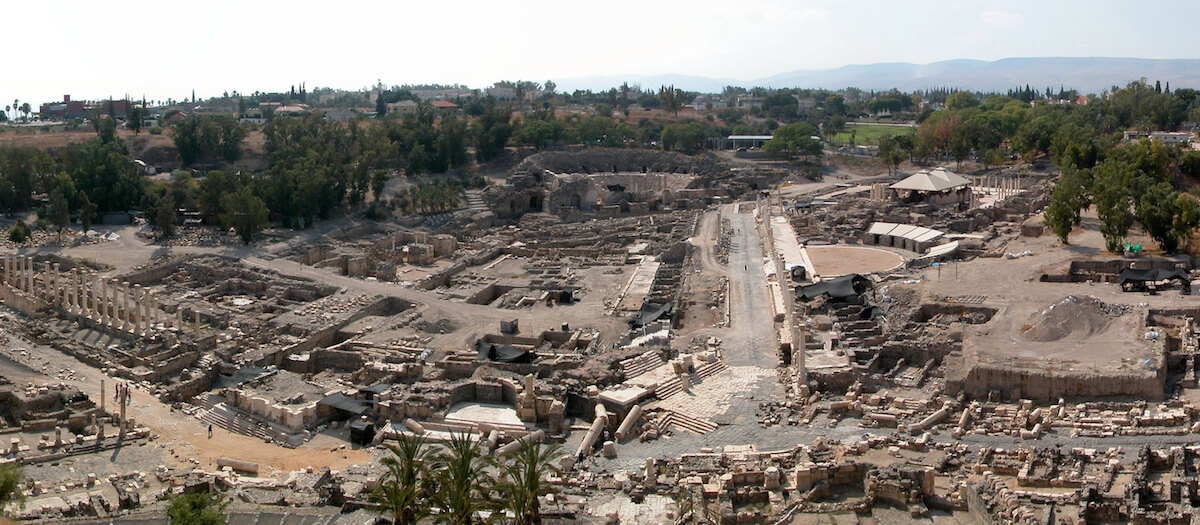Sometimes the blessings God gives you seem hard to hold. In some cases, the difficulty urges us to abandon the blessings. Beth Shean gives us a great example.

(Photo: Beth Shean excavations. Courtesy of the Pictorial Library of Bible Lands)
The Lord provided Beth Shean for the Tribe of Manasseh. But the excellent location proved to be a double-edged sword. Because the spot was so good, every nation wanted control of Beth Shean. And whoever held it always seemed to contend with those who would wrench it from their grasp.
Perhaps its strategic location gave Beth Shean its name, “House of Security.”
But security only works when you trust in God.
Beth Shean’s Prime Spot
As with most ancient sites in the Holy Land, geography explains the reasons for Beth Shean’s significance.
- For thousands of years, Beth Shean stood as Canaan’s front door to all westbound traffic from the Jordan Valley to the strategic Jezreel Valley and the Mediterranean Sea. Its surroundings are fertile with abundant water.
- Egypt dominated the land of Canaan just prior to the Exodus (1446 BC), and Beth Shean served as the primary city of the region.

(Photo: Beth Shean aerial. Courtesy of the Pictorial Library of Bible Lands)
What God’s People Abandoned, Others Controlled
In ancient Israel, Joshua allotted the city to the tribe of Manasseh (Joshua 17:11). But Manasseh failed to drive out the Canaanites who lived there, and half of Manasseh settled across the Jordan Valley in what is modern Jordan (Judges 1:27).
- During the reign of King Saul, the Philistines controlled Beth Shean. In fact, after Saul’s tragic death on nearby Mount Gilboa, the Philistines fastened the decapitated bodies of Saul and his sons to the wall of Beth Shean in the open square (1 Samuel 31:10-12; 2 Samuel 21:12).
- The city remained a thorn in the side of Israel until the time of David and Solomon (Judges 2:3; 1 Kings 4:12).
- After Alexander the Great swept across the Middle East, Beth Shean was renamed Scythopolis (“City of the Scythians”) and became a prosperous Greek city.
- Once Rome gained control of Israel in the first century BC, Scythopolis became one of the cities of the Decapolis, the only one of the “ten cities” west side of the Jordan River.
- During the Byzantine era, Scythopolis served as a major center for Christianity.
An earthquake in AD 749 toppled many of the city’s great structures and put the death blow to its prosperity. At the base of the tell today, columns still lay on their sides where they fell.

In other words, what God’s people abandon, the world clambers to control.
A Place for Happy Explorers
With pen in hand in 1896, George Adam Smith wrote of Tel Beth Shean:
There are few sites which promise richer spoil beneath their rubbish to the first happy explorer with permission to excavate. (The Historical Geography of the Holy Land, p. 362)
A century later, the happy explorers proved Smith correct. From 1989 to 1996, archaeologists partially excavated the ruins below Tel Beth Shean. As a result, walking among the ruins feels like stepping back in time. Beth Shean offers the largest, and some of the best-preserved ruins in all of Israel.
Walking among the ruins of Beth Shean is simply stunning. It allows any visitor to be, in George Adam Smith’s words, a “happy explorer.” As many times as I’ve been there, I always look forward to returning.
The most impressive ruins discovered in Beth Shean come from the Roman and Byzantine times.
- Archeologists have discovered, among many finds, an amphitheater where gladiators fought, a public bathhouse—the largest discovered in Israel—and a theater that could seat between 6,500 and 7000 people.
- The colonnade along the original Byzantine street is nothing short of spectacular.

(Photo: Panorama atop Tel Beth Shean. Courtesy of the Pictorial Library of Bible Lands)
The Roman-Byzantine ruins lay in the shadow of the ancient tell itself, the original site of Beth Shean.
- Tel Beth Shean appears as a huge hill, bulging eighty meters high (260 feet) from the eastern end of the Harod Valley, with over a dozen layers of occupation beneath its topsoil.
- The steep climb to the top of the tell offers an impressive panorama of the Roman-Byzantine city, as well as the Jordan Valley to the east, and the Harod Valley and Mount Gilboa to the west.
- Most visitors never take the time to see this, but the view is worth the climb.
Beth Shean’s Lingering Lesson
Beth Shean’s prime location made it the envy of everyone. It was hard to control. I think about our lives the same way. When the blessings God gives us are difficult, it doesn’t mean we should abandon them.
God’s blessings make us dependent on Him, not independent of Him.
The difficulty is designed to drive us closer to the One who has blessed us.
Tell me what you think: What blessings have God given you that often seem too hard to hold? To leave a comment, just click here.
